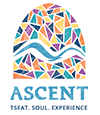THE DISCIPLE
Rabbi Chaim Vital (sometimes referred to as Rabbi Chaim Vital Calabrese, since his family was from Calabria, Italy) was born c. 5303 (1543 CE). Rabbi Chaim is renowned primarily as the recorder and editor of the teachings of Rabbi Yitzchak Luria, although he himself was also an accomplished kabbalist and writer.
Rabbi Chaim’s father, Rabbi Yosef was famed as an expert scribe whose tefillin were much sought after, having been written in holiness and purity, and with special kabbalistic intentions. Rabbi Yosef Caro said in the name of his maggid (an angelic teacher) that half the world existed by virtue of Rabbi Yosef Vital’s tefillin.
Rabbi Chaim studied the revealed aspects of Torah under Rabbi Moshe Alshich, one of the foremost rabbis in Safed. Rabbi Yosef Caro, at the behest of his maggid, advised Rabbi Alshich to invest as much effort in his young student as possible, for he would be Rabbi Caro’s successor. Rabbi Chaim studied Kabbala under the leading kabbalistic luminary in the world at that time, Rabbi Moshe Cordovero (Ramak). One of the senior kabbalists living in Safed, Rabbi Shabtai Lapidot, recognizing that Rabbi Chaim was destined for greatness, urged the young man to extract himself from all worldly matters and devote himself to the study of Kabbala, promising him that he would reach unimaginably lofty levels.
Indeed, in the year 5329 (1569 CE), at the relatively young age of 26, Rabbi Chaim began writing a commentary on Zohar, the primary text of Kabbala, according to the teachings of Ramak. However, by the following year Rabbi Chaim’s life took a completely different direction.
In the year 5330 (1570 CE) Rabbi Yitzchak Luria (the Arizal) came to Safed from Egypt. Initially Rabbi Chaim was not attracted to the Arizal, but after the passing of his teacher, Rabbi Moshe Cordovero, he became attached to the Arizal, quickly becoming his chief disciple. He tells that Ramak appeared to him in a dream a few months after his passing, and when Rabbi Chaim adjured him to tell him the truth – whether they studied Kabbala according to his system or according to the Arizal’s in the Heavenly Academy – his former teacher replied. “Both approaches are true. However, my approach is the simple one, suitable for beginners in the wisdom of Kabbala, whereas the teachings of your teacher [the Arizal] are deeper and are the primary approach. I, too, in the Heavenly Academy, study only according to the approach of your master.”
Rabbi Chaim describes his initiation into the Arizal’s new approach to Kabbala as follows: “When I [first] came to my teacher of saintly memory [the Arizal] to study this wisdom under him, he was about to leave for Tiberius. He took me with him. We boarded a boat, and as we were sailing [across the Kinneret] at a point opposite the arches of the Old Synagogue of Tiberius, my teacher dipped a cup into the water and gave it to me to drink. He told me that now I would be able to grasp this wisdom [the teachings of Kabbala] for I had just drunk water from the well of Miriam [which is buried in the Kinneret]. From that time on I began to enter the depth of this wisdom.”
Rabbi Chaim remarked that the works of earlier kabbalists, from after the Ramban [Nachmanides, 4955-5030 (1195-1270 CE)] until the Arizal, were built on mortal intellect, whereas the teachings of his master, the Arizal, were revelations received by the Arizal through Divine inspiration (ruach HaKodesh).
Within a year of his initiation into the Arizal’s teachings, Rabbi Chaim had become famous throughout Israel and the Diaspora as one of the great kabbalists. When the Arizal passed on in 5332 (1572 CE), a mere two years after Rabbi Chaim had begun studying with him, Rabbi Chaim was almost universally regarded as his successor.
The Arizal was not accustomed to record his teachings in writing. Many of his disciples, however, recorded his oral teachings, despite the Arizal’s explicit prohibition to do so. He had given only Rabbi Chaim permission to record his teachings. After the Arizal’s passing, Rabbi Chaim gathered all their manuscripts and began editing and organizing them. Today these are known as Kitvei Arizal – the Writings of the Holy Ari. He began teaching the kabbalistic insights he had received from his master to his many disciples and thus he became the revered leader of a significant group of kabbalists. He also gained a reputation as a miracle worker, a healer and a master of practical kabbala. He was able to discern the nature and history of the souls of men.
In 5347 (1587 CE) Rabbi Chaim was appointed a leading judge in the rabbinical courts in Jerusalem by his teacher, Rabbi Moshe Alshich. He remained there for several years and then returned to Safed. He moved to Damascus in 5354 (1594) where he passed away in 5380 (1620 CE) at the age of seventy-seven.
Sources: Shem HaGedolim; Encyclopedia l’Gedolei Yisrael; Encyclopedia Judaica.
